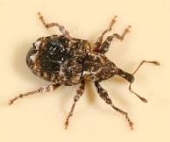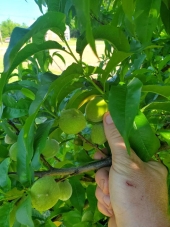
 1
1




Zone 6, 45 inches precipitation, hard clay soil




 1
1




Weeds are just plants with enough surplus will to live to withstand normal levels of gardening!--Alexandra Petri





Hans Albert Quistorff, LMT projects on permies Hans Massage Qberry Farm magnet therapy gmail hquistorff




Zone 6, 45 inches precipitation, hard clay soil




 2
2






Striving to grow things as naturally, simply, and cheaply as possible! 
My YouTube channel
 1
1




Country oriented nerd with primary interests in alternate energy in particular solar. Dabble in gardening, trees, cob, soil building and a host of others.
 2
2




Steve Thorn wrote: A peach seedling that I found growing in my area is naturally resistant to it, and produced a huge amount of almost completely pest free peaches (which is unheard of in this area being unsprayed).
Zone 6, 45 inches precipitation, hard clay soil








C. Letellier wrote:For future years research nematodes.
If it is still happening you can partially protect by repeatedly spraying the tree with the proper clay mixture leaving it looking whitish to grayish. They are typically Kaolin or Bentonite based with a bit of other stuff to improve binding and water fastness. Completely spray the tree as the leaves and fruit grow repeating as necessary. Apparently the insects don't like the feel of trees so treated. There are versions of this that qualify as organic and others have stuff mixed with it that doesn't qualify. Here is a gurneys link but many versions from many makers are available.
plant protectant.
Zone 6, 45 inches precipitation, hard clay soil




 2
2




Zone 6, 45 inches precipitation, hard clay soil











 1
1




Hans Albert Quistorff, LMT projects on permies Hans Massage Qberry Farm magnet therapy gmail hquistorff
 4
4




Zone 6, 45 inches precipitation, hard clay soil




 2
2




Hans Quistorff wrote:Adding to my previous reply: Because my worst problem is the peach leaf curl and it is best controlled by keeping the tree dry I have my trees in a high tunnel made from abandoned portable garages. some of them come with screened side walls so that reduces the curculio flies and they prefer the non fuzzy plums anyway so the peaches have little problem. I should have removed the cover during snow season so now I have to rebuild the covering.
Zone 6, 45 inches precipitation, hard clay soil




 1
1





"We're all just walking each other home." -Ram Dass
"Be a lamp, or a lifeboat, or a ladder."-Rumi
"It's all one song!" -Neil Young
 1
1




Zone 6, 45 inches precipitation, hard clay soil




 1
1




This is all just my opinion based on a flawed memory


|
Be reasonable. You can't destroy everything. Where would you sit? How would you read a tiny ad?
Homestead Pigs Course
https://permies.com/wiki/365748/Homestead-Pigs
|







